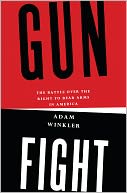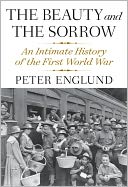[E]ven as he produces evidence of early recognition of gun rights, Winkler also uncovers substantial historical support for gun control restricting those rights. "The right to bear arms in the colonial era was not a libertarian license to do whatever a person wanted with a gun," Winkler writes. "When public safety demanded that gun owners do something, the government was recognized to have the authority to make them do it." Thus, gun owners were barred from selling guns to Native Americans and blacks — and to those who refused to swear allegiance to the Crown.This week in the New York Times: a review of The Beauty and the Sorrow: An Intimate History of the First World War (Alfred A. Knopf), by Swedish historian and journalist Peter Englund. It is "intense," "bighearted," and "unusual." Here's more:
“The Beauty and the Sorrow” threads together the wartime experiences of 20 more or less unremarkable men and women, on both sides of the war, from schoolgirls and botanists to mountain climbers, doctors, ambulance drivers and clerks. A few of these people will become heroes. A few will become prisoners of war, or lose limbs, go mad or die. Their lives flicker here like votive candles lighted in a church; new ones are added to the mix while some wink out.Also in the NYT: Henry Kissinger's long review of George F. Kennan: An American Life (Penguin Press), by John Lewis Gaddis. Kissinger opens with an informal survey, in which he finds young men and women to be "essentially oblivious" of Kennan and his contributions to American foreign policy. He praises the author for "bringing Kennan back to us, thoughtful, human, self-centered, contradictory, inspirational — a permanent spur as consciences are wont to be."
That's all for this week. The ASLH meeting is still on, and we're busy gathering lots of news to report back to you! For more book review coverage, check out Ralph Luker's regular round-up at Cliopatria.

